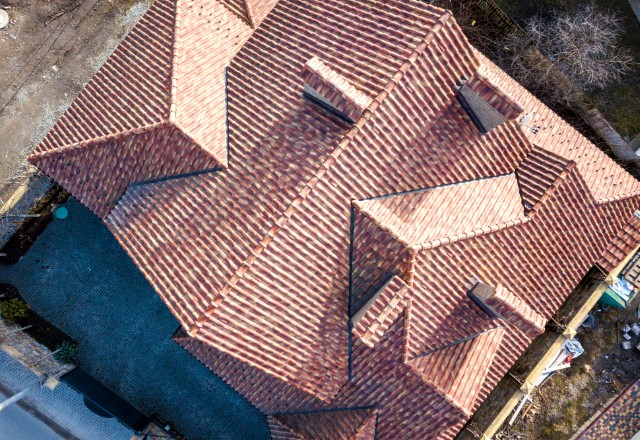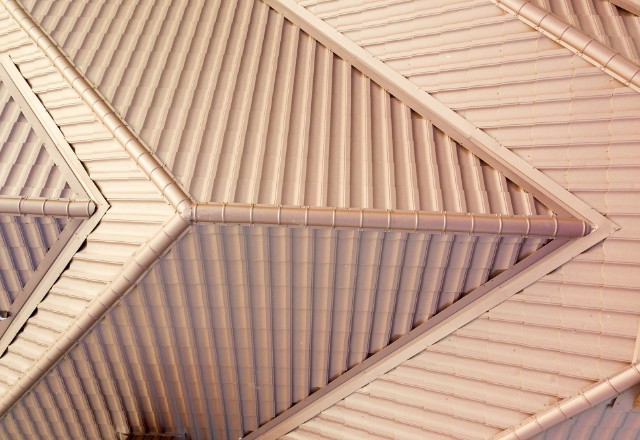Roof flashing is a vital but often overlooked element in roofing systems, playing a crucial role in protecting your home from water intrusion. In this extensive guide, we will delve into the world of roof flashing, covering its various types, materials, installation techniques, and the benefits it provides. By the end of this comprehensive overview, you will have a clear understanding of the importance of roof flashing in maintaining a leak-free and durable roof.
Flashing on a roof is an important part of protecting the structure and integrity of your home. It is usually made out of metal or plastic, and installed along areas such as roof valleys, chimneys, skylights, walls, and other intersections where two different elements meet. Flashing helps to prevent water from seeping in through these areas by creating a barrier that seals the gap between them.
Disclaimer: It is highly recommended to consult with an experienced roofing specialist before attempting any flashing installation work yourself. Advance Roofing LLC has been proudly serving the Spokane, WA area for many years with the highest standard of quality roofing solutions and would be more than happy to help you with your needs.
What Is Roof Flashing?
 Roof flashing is a specialized component of a roofing system designed to prevent water infiltration at critical points where the roof meets vertical surfaces or where two roof sections intersect. Its primary function is to divert water away from these vulnerable areas and ensure that it flows harmlessly off the roof’s surface. Roof flashing serves as a barrier against water penetration, safeguarding the structural integrity of your home.
Roof flashing is a specialized component of a roofing system designed to prevent water infiltration at critical points where the roof meets vertical surfaces or where two roof sections intersect. Its primary function is to divert water away from these vulnerable areas and ensure that it flows harmlessly off the roof’s surface. Roof flashing serves as a barrier against water penetration, safeguarding the structural integrity of your home.
Flashing is a flexible yet durable material, typically composed of metal, that is installed around openings and junctures on the roof, such as chimneys, skylights, vents, and wall intersections. By sealing these areas, it acts as a protective shield, preventing water from seeping into your home.
Benefits of Roof Flashing
Properly installed roof flashing provides an array of benefits that are integral to the overall well-being of your home and its structural components.
1. Waterproofing: Roof flashing’s primary role is to waterproof your roof. By directing water away from vulnerable areas, it reduces the risk of water penetration, leaks, and costly water damage repairs.
2. Enhanced Durability: Flashing significantly contributes to the longevity of your roof. It protects critical junctions from moisture, preventing premature wear and tear.
3. Preventing Rot: Water infiltration can lead to wood rot and mold growth in your home’s structural components. Roof flashing helps prevent such damage, saving you from extensive repair costs.
4. Energy Efficiency: Properly installed flashing ensures that your home remains sealed and energy-efficient. It prevents drafts and heat loss, which is essential for maintaining a comfortable and cost-effective living space.
5. Aesthetic Appeal: Roof flashing, when well-maintained, contributes to the overall aesthetics of your roof and home. It provides a neat and finished appearance that enhances your curb appeal.
Common Types of Roof Flashing
 The choice of flashing material depends on various factors, including the roof’s design, climate, and aesthetic preferences. There are several types of roof flashing to consider:
The choice of flashing material depends on various factors, including the roof’s design, climate, and aesthetic preferences. There are several types of roof flashing to consider:
Galvanized Steel Flashing
Galvanized steel flashing is known for its durability and corrosion resistance. It is frequently used in areas with high moisture content and is suitable for roof valleys, chimneys, and eaves.
Sheet Metal Flashing
Sheet metal flashing is a versatile option, typically made of aluminum or stainless steel. It is lightweight and suitable for low-slope roofs, and it can be applied in various roofing applications.
Copper/Metal Roofing Materials Flashing
Copper flashing is a premium choice due to its exceptional corrosion resistance and aesthetic appeal. It is often used in high-end roofing projects and can develop a unique patina over time, adding character to your roof.
Continuous Flashing
Continuous flashing, also known as apron flashing, is a long, continuous piece of material installed along roof eaves. It is effective in directing water away from the structure and is commonly used in these areas.
Valley Flashing
Valley flashing is designed for installation in the valleys of a roof, where two roof sections meet. It ensures that water does not pool in these critical areas, preventing leaks and potential water damage.
Step and Counter-Flashing
Step flashing is used in wall-roof intersections, providing a protective barrier against water infiltration. Counter-flashing is typically applied over step flashing to provide an extra layer of protection, ensuring the utmost security in areas such as chimney flashing.
Installation of Roof Flashing

Proper installation of roof flashing is essential to ensure its effectiveness in protecting your home. The installation process involves several key steps:
1. Inspection: Begin by inspecting your roof and identifying areas where flashing is needed. Critical junctions, transitions, and intersections require special attention.
2. Material Selection: Choose the appropriate flashing material based on the specific application and the environmental conditions in your area.
3. Cutting and Shaping: Precisely cut and shape the flashing pieces to the required size and design to fit the areas where they will be installed.
4. Placement: Install the flashing at the designated locations, ensuring that it overlaps with adjacent materials, creating a secure barrier against water intrusion.
5. Sealing: To further fortify the flashing, seal seams and joints with caulk or roofing cement, creating a watertight and impenetrable barrier.
6. Testing: After installation, it is crucial to perform a water test to verify that the flashing effectively directs water away from vulnerable areas, preventing any potential leaks or damage.
7. Regular Maintenance: To maintain the integrity of your flashing, perform periodic inspections and maintenance to address wear and tear. Timely repairs or replacements can extend the lifespan of your flashing and ensure its ongoing effectiveness.
DIY or call a professional for installation of roof flashing?
The decision between tackling the installation of roof flashing yourself (DIY) or hiring a professional is an important one and depends on several factors. Here are some considerations to help you make the best choice:
DIY Installation
1. Skills and Experience: If you have experience in roofing and DIY home improvement projects, you may feel confident in handling the installation yourself. Experience with tools, materials, and general construction work is beneficial.
2. Cost Savings: DIY installation can save you money in terms of labor costs. You purchase the materials and invest your time and effort, which can be cost-effective if done correctly.
3. Small Repairs: If the flashing installation is a small repair or maintenance task, such as sealing a minor leak around a vent or chimney, it may be a manageable DIY project.
4. Time Availability: You should have the time available to complete the project without rushing. Rushing through a roofing project can lead to mistakes and potentially more significant issues.
5. Confidence: Confidence in your abilities and a clear understanding of the flashing installation process are essential. You should feel comfortable with the project’s scope.
Professional Installation
 1. Complex Roofing Systems: For homes with complex roofing systems, multiple intersections, or extensive flashing requirements, it’s generally safer to hire a professional. They have the expertise to handle intricate installations.
1. Complex Roofing Systems: For homes with complex roofing systems, multiple intersections, or extensive flashing requirements, it’s generally safer to hire a professional. They have the expertise to handle intricate installations.
2. Safety Concerns: Roof work can be dangerous, especially for those without proper safety training and equipment. Professionals are equipped to work safely at heights and follow industry safety standards.
3. Warranty: Professional roofers often provide warranties on their work, giving you peace of mind in case any issues arise after the installation. DIY projects typically lack this warranty protection.
4. Time and Convenience: Hiring a professional can save you time and effort. They can complete the installation efficiently, allowing you to focus on other tasks or avoid the hassle of a time-consuming DIY project.
5. Quality and Longevity: Professional roofers are trained to ensure the flashing is installed correctly, promoting its longevity and effectiveness. An expertly installed flashing system can prevent future water damage.
6. Local Regulations: Roofing work may be subject to local building codes and regulations. Professionals are knowledgeable about these requirements and ensure compliance.
For straightforward flashing repairs or small DIY projects, confident homeowners with some roofing experience may choose to handle the installation themselves. However, for complex roof systems, safety concerns, warranty protection, and the assurance of quality work, it is advisable to hire a professional roofer. Ultimately, the decision should be based on your level of expertise, the scope of the project, and your comfort with taking on the task. Safety and long-term protection against leaks should be the top priorities when deciding whether to DIY or hire a professional for roof flashing installation.
Conclusion
In conclusion, roof flashing is a critical component of your roofing system, protecting your home from water damage and ensuring the longevity of your roof. Selecting the appropriate type of flashing material and ensuring its proper installation are paramount to its effectiveness. Regular maintenance of your flashing is essential to safeguard your home against potential leaks and costly repairs. With a well-maintained roof flashing system, you can enjoy a durable, leak-free, and secure roof over your head.



 509-201-4190
509-201-4190
